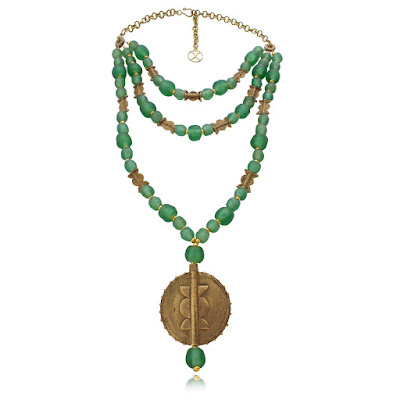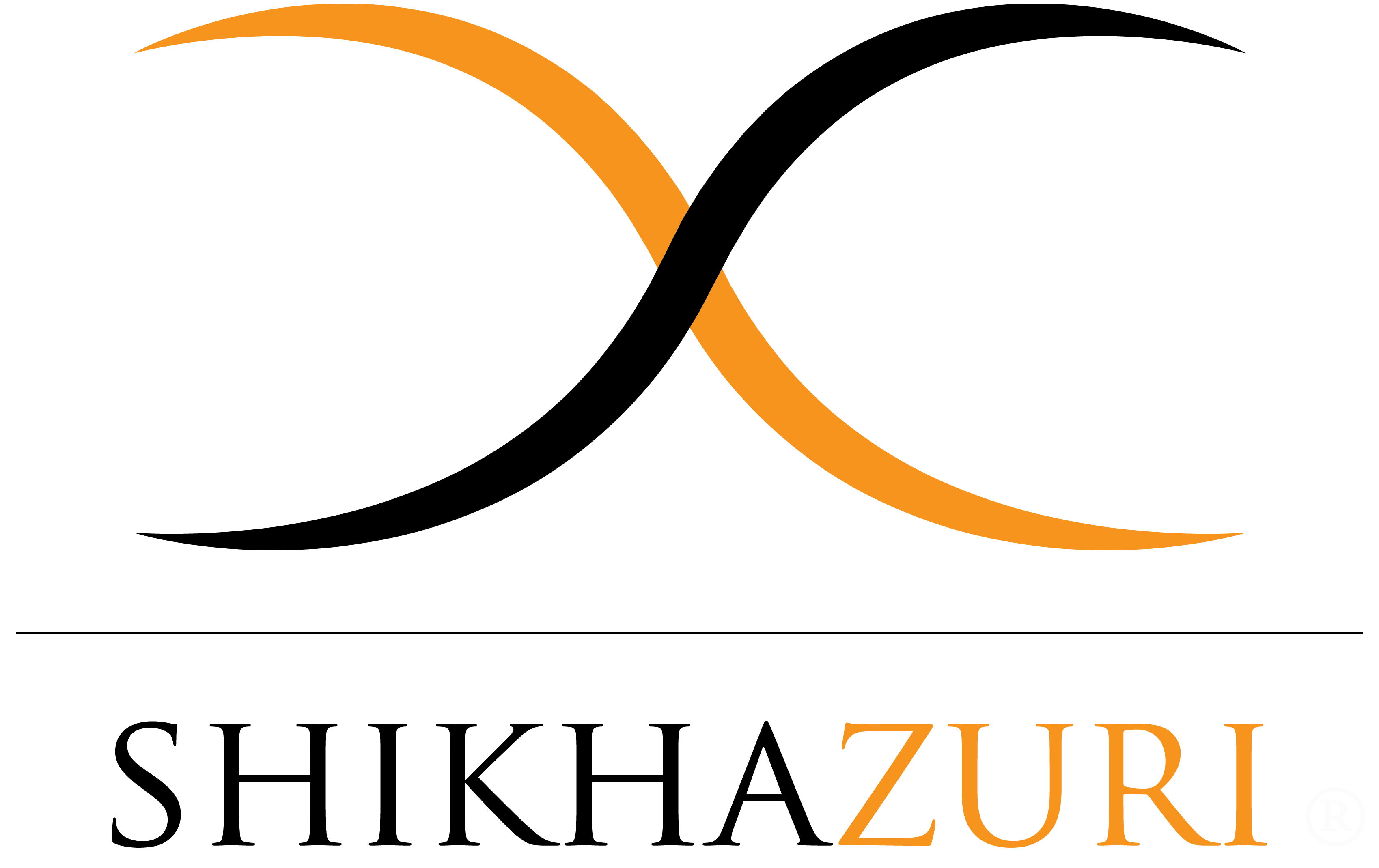THE KENYAN NOMAD
by Roshni Walia
30 November 2017
Where Passion and Talent Intersect: Meet Shikha Vincent
Not only is Shikha a wonderful person to be around – seriously, spending time with her is like a much needed recharge, she has GREAT energy – but she’s also passionate about wildlife conservation. Coupled with an artistic talent, she’s found a great way to channel her energy in her jewellery line. Let’s find out more!
Shikha’s professional background is in law. She did her undergraduate and masters in Law in the UK, and developed a particular interest in environmental law. When she returned to Kenya, she worked on a community based wildlife and conservation project bordering Tsavo West National Park for four and a half years.
She started making jewellery in 2008 following the onset of the global financial crisis. Tourist bookings at the boutique lodge she was managing had dropped drastically, which is what spurred the decision to try her hand at making jewellery as a means to generate funds to assist with raising the animal orphans she helped to raise. Initially, this started with a couple of trips to various local markets to source beads and materials to make jewellery. However, after a few weeks of learning basic techniques, she was hooked, and managed to sell her pieces to visitors and friends. That’s where her jewellery making journey began.
After working on the wildlife and conservation project in Kenya, Shikha returned to the UK to undertake the Legal Practice Course to give her the option to practice law, and provide her with a solid career fall back option. She then went on to work in legislative affairs for an international animal welfare organisation based in London, and following that, moved to Dubai and spent three years working as a legal contracts manager. Although it was a great experience, she realised that life in the corporate world wasn’t for her, and so, along with her husband, decided to move back to Africa. As she says, “That’s when the I decided to focus my full attention to making my jewellery business a reality.”
Her brand name, SHIKHAZURI, is intended to capture the cross cultural influence that is central to her designs. SHIKHAZURI is the amalgam of her name “Shikha”, which means ‘tip of the flame’ in Hindi, and ‘to hold or embrace’ in Swahili. The word “zuri” means beautiful in Swahili. Collectively, it represents timeless beauty that goes beyond adornment.
When asked what the main inspiration behind the brand is, Shikha says:
“To promote cultural awareness through adornment. We’re exposed to so many cultural influences on a daily basis, from the food we eat, music we listen to, clothes we wear, people we interact with, etc. I wanted my brand to be both a reflection and celebration of this reality. Therefore, my one-of-a-kind range of jewellery combines beads and artefacts from around the world into a single piece of adornment to reflect this melting pot, while also telling the story behind each element: where it came from and what it symbolised to the cultures from which it originated. Similarly, SHIKHAZURI’s sister brand, Simply Zuri, also focuses its attention on story telling and sharing the cultural significance and symbolism behind each piece I create.”
As an avid conservationist, and having worked in the field for several years, Shikha is very passionate about African wildlife. Having witnessed poaching first hand and the effects of human-animal conflict, she’s committed to supporting initiatives that work directly with communities and operate at grassroots level to promote wildlife conservation. So, not only does she create fantastic pieces, but she currently supports the Mara Lion Project and donates 5% of profits from sales towards the cause.
Currently, Shikha is working on introducing her products into the overseas market, and depending on the response, she’ll make the decision to either refine or develop certain lines. For example, if the current Simply Zuri range is well received, she may add a new collection next year. If the market demands a more African aesthetic, she will introduce more local raw materials into my pieces.
When asked where she sees her brand in 5 years, Shikha responded:
“I’d love the brand to have a stronghold in the overseas market and be in a position where SHIKHAZURI can employ a small team of people. It’s my ambition that people who encounter the brand will automatically relate it to “jewellery with a story”.”
If you want to buy some of Shikha’s pieces, you can shop from her online shop or you can check out her list of stockists to physically shop her products. (And I’d highly encourage you to do so!) I’m a huge fan, as you can already tell, and I love getting her pieces as friends for others.
Let’s hear from Shikha about some of the questions I asked her:
What are some challenges you’ve faced as a female entrepreneur?
Initially I felt people would not take me seriously and viewed what I was doing as “just a hobby”. I think especially with creative business, until you start getting some runs on the board, whether it be securing a decent amount of business or generating PR, it can be a challenging to earn respect, and if you let it get to you, it can be demoralising.
How have you overcome these challenges?
Having a supportive network around me, particularly fellow female entrepreneurs has been really helpful. I’ve done this through Facebook groups and networking events such as the ones arranged by YWSE. Whenever I feel down, I ask myself, “why am I doing this?”, and then I focus on the end goal and force myself to block out negative influences and move forward.
Any advice to female entrepreneurs who may be embarking on similar journeys?
Don’t overthink it – just do it. Challenges are a natural part of any entrepreneurial journey, but you’ve got to persevere. Find an experienced mentor within your industry who can guide you on your journey. Having the support of family and friends is great, but they’ll usually tell you what you want to hear, and may not be able to give you the honest advice you need.
The Shaman Flair Necklace. It’s been one of the most challenging pieces to create, but it’s probably one of the most dramatic and is a real conversation starter statement piece. It’s most striking feature are the recycled camel bone spears which were supposedly used by tribal medicine men to tie off their herb bags. These are suspended from a mixture of trade beads which have distinctive orbicular markings, translucent Ghanaian glass beads and midnight blue lapis lazuli beads.

If you could dress any 3 celebrities in pieces from your lines, who would those celebrities be, and what would you dress them in?
Michelle Obama – she’s a beautiful woman and her dress style is very classy, but she’s not afraid to be bold, so I’d choose something like the Abrihet or Fana Necklace.
Rihanna – she’s got an adventurous sense of style and can pull of almost any look. I dress her with something edgy, like one of the shoulder pieces I created for Africa Fashion Week London.
Angelina Jolie – she holds a chic and confident poise and I think the emerald green and rich bronze-gold tones of the Fana Necklace would complement her eyes and dark hair beautifully.
If you could sum up your brand in 3 words, they’d be…
Meaningful, Exotic, Captivating.
What is the best feedback you’ve received about your brand and your work?
The stories that I share about each ethnographic element are what makes my jewellery extra special and captivating. This is the biggest compliment for me because it shows that what I set out to create, “jewellery with a story”, is having the desired impact.
What is the toughest feedback you’ve received about your brand and your work?
I often have people telling me that while my one-of-a-kind pieces are striking, they could never wear them because they’re too bold. I realise that my design aesthetic means that my market is limited to a certain type of woman who does feel confident enough to be able to carry off this bold style, but over time that’s actually helped me to focus my energy even more to discovering and learning about my niche market, and reaching the women who do adore wearing my jewellery.
Who has been your biggest supporter along the journey?
I’m blessed to have such a supportive family who have stood by me throughout the last couple of years, but I’m also lucky to have found an incredible business mentor who has been instrumental to my success thus far.
Are there any books you recommend to fellow female entrepreneurs?
Tools of Titans by Tim Ferris – this huge book may look daunting but it’s broken up into easily digestible parts and highlights the tactics, routines and habits of billionaires, icons and world-class performers.
If you could go back and give yourself some advice as you were starting out, what would it be?
Have a solid roadmap that can guide the direction you want your business to go in. However, recognise that things may not always go according to your initial plan, and that’s ok – if things change and you need to pivot, then do so. Life happens, and things change in business – be flexible and work around it.
In sourcing materials for your jewellery, you have travelled extensively. What’s your favourite destination, and why?
I loved Marrakech – everything from spending days trawling the bustling and colourful souks to the fragrant and delicious tagines and of course the drool worthy jewellery from across the region.
If your brand were an animal, which would it be and why?
It would have to be a big cat – I’ve had the privilege of raising various species and they’re my favourite animals. Because of its characteristics, my brand resembles the leopard: they’re astute, brave and beautiful. And I’d like to put a positive spin on the saying “a leopard never changes its spots”, in that I believe the brand has upheld its core values since conceptualisation, and it’s my intention that it continues to stay true to its very essence: emblematic of classic beauty inspired by cultural influences from around the world.



Read the article and follow The Kenyan Nomad here.




















